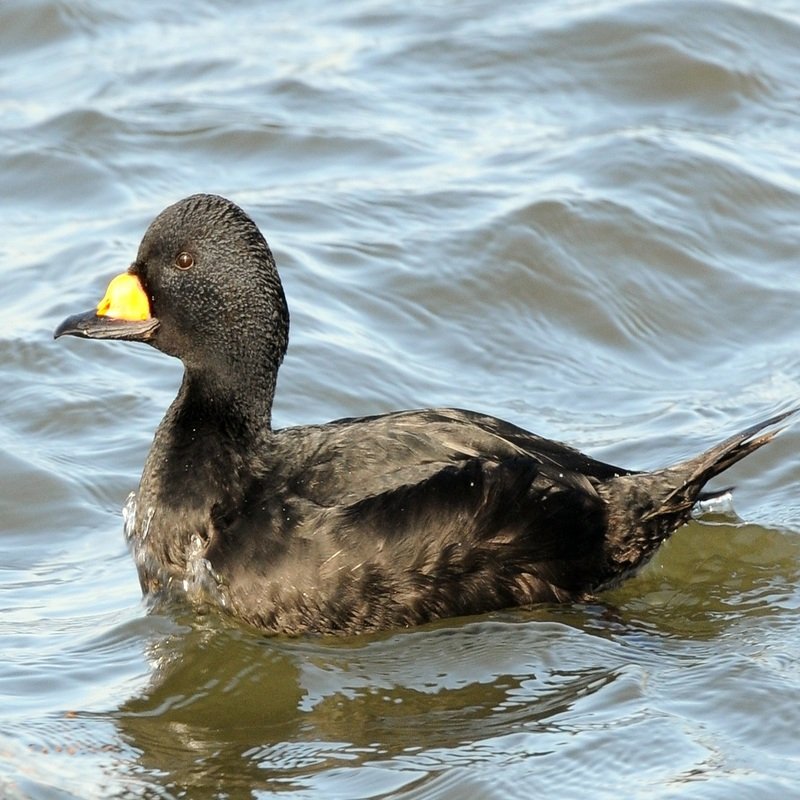The black scoter, sometimes known as the American scoter, is a large sea duck (Melanitta americana). The genus name is derived from the Ancient Greek melas, which means “black,” and netta, which means “duck.” The genus name is derived from the Latin word for “American.” It shares the subgenus Oidemia with the common scoter M. nigra; the two are occasionally regarded conspecific, with the black scoter referred to as M. nigra americana.
Quick Overview: Melanitta Americana – Black Scoter
Body size: Around 17-21 in (43-53 cm) and a weight of 1088 g (38.4 oz)
Main colors: Black, Yellow, Gray-Brown, White, Gray-White
Range: Coastal Area of the United States
Migratory Bird: Yes
Best time of the year to see in the U.S.: January, February, December
Conservation Status: Least Concern
Black Scoter Description
The male is all black, save for a brilliant yellow knob at the base of his black beak. The female is grayish-brown in color with pale white streaks running down her sides. Her bill is black, and her cheeks are grayish-white.

Size
These birds have a length of 17-21 in (43-53 cm) and a weight of 1088 g (38.4 oz). Their wings could range from 30-35 in (46-89 cm).
Feeding
Specifically, mollusks and insects. At sea, it mostly feeds on mollusks, particularly mussels and other bivalves; however, it also consumes crustaceans, marine worms, and echinoderms. During the summer, eats a variety of aquatic insects, as well as fish eggs, mollusks, tiny fish, and some plant material.
Habitat
The black scoter breeds in Labrador and Newfoundland, southeast and northwest of Hudson Bay. It is also found east of the Yana River on the Siberian side of the Bering Straits.
Behavior
While migrating or wintering along the seacoasts, this species dives for crustaceans and molluscs and feeds on insects and their larvae, particularly caddisflies, fish eggs, and, more infrequently, vegetation such as duckweed while breeding on freshwater. In winter, it congregates in big flocks on suitable coastal waters.
Melanitta Americana Scientific Classification
- Kingdom: Animalia
- Phylum: Chordata
- Class: Aves
- Order: Anseriformes
- Family: Anatidae
- Genus: Melanitta
- Subgenus: Oidemia
- Species: Melanitta americana
Best time of the year to see
The best time to see these birds in the United States is during the winter season (December to February).
Distribution of the Black Scoter in the USA
Breeding areas include western Alaska, the Hudson Bay region, and Labrador. Winters along the shores of Alaska, California, Newfoundland, and the Carolinas South Carolina, and North Carolina, as well as portions of the Gulf Coast and the Great Lakes.
The Black Scoter can be found in the following states in the United States – Arizona, New Mexico, Oklahoma, Mississippi, Louisiana, Alabama, Montana, Wyoming, Colorado, Illinois, Indiana, Ohio, and Georgia.
